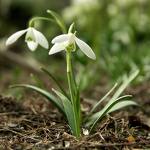
As the winter draws to a close and warm days become more common in my zone 7 garden I especially enjoy the plants that produce flowers at this time. Here are my favorites.
(The time of blooming varies with the temperature)
Snowdrop (Galanthus nivalis): Dainty, white flowers can emerge as early as January. Plant the bulbs in the fall for winter bloom.
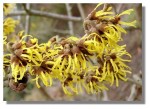
Witch hazel (Hamamelis hybrids): This small tree produces yellow or red flowers January to March. The tough, ribbon like flowers are unaffected by cold or snow and have a sweet scented fragrance. Witch hazel likes a moist soil rich in organic matter and grows in both sun and shade. By planting early varieties like ‘Jelena’ (orange), ad ‘Wisley Suupreme’ (yellow), followed by ‘Arnold’s Promise’ (dark yellow) you can have a succession of blooms into Spring. In fall the foliage turns orange and yellow. The flowering branches are beautiful in arrangements.
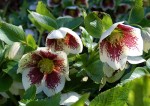
Hellebores: Christmas (H. niger) and Lenten roses (H. orientalis): produce bell shaped flowers in shades of white, pink, red, and mahogany from mid to late winter. These long-lived herbaceous perennials have foliage that is attractive year around but should be cut to the ground before new growth emerges. They like sun in winter but need shade during the summer. Self seed generously.
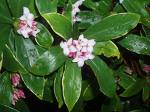
Daphne odora: This rounded, evergreen, 4 ft shrub is probably the most fragrant winter blooming plant. Blooming from February through March it looks handsome all year with its green or variegated foliage. The flowers are borne in clusters so that the buds and flowers are next to each other. Plant in light soil with very good drainage and no afternoon sun. Over watering this plant will kill it.

Cornelian cherry dogwood (Cornus mas): Yellow flowers are produced on a small tree or large shrub in February-March. This is a good alternative to forsythia and is tolerant of urban conditions. Plant is full sun to partial shade in moist well drained soil but this plant is tolerant to variations in moisture, pH, and heat. An outstanding variety is ‘Golden Glory’.
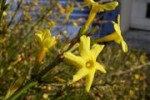
Winter jasmine (Jasminum nudiflorum): Bright yellow blossoms that lack fragrance are produced on 7′-10′ deciduous vines during November through March. Plant in full sun or partial shade and in moist soil. It tolerates hard pruning and should be pruned immediately after flowering to prevent bare patches and keep the plant dense. Hardy in zones 6-10. Good subject for bonsai.

Winter Hazel (Corylopsis): Bell shaped fragrant light yellow flowers bloom on bare stems in late winter to early spring. The leaves develop after the flowers and have a pink tinge at first but turn green and then yellow in the fall. Plant in acid, well drained soil high in organic matter in an area that is protected from the mid day sun and strong wind.
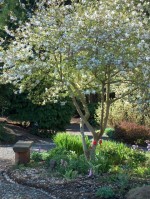
Star magnolia: White or pink star shaped flowers are produced on leafless stems in late winter to early spring. Flower color varies with the temperature and unexpected late frosts can damage the flowers. The leaves open bronze-green and turn to deep green, then yellow in the fall. Plant in deep, acidic soil in full sun.

Japanese Rice Paper Plant (Edgeworthia chrysantha): Soft yellow fragrant flowers are borne on a large deciduous shrub. The bold bluish foliage is attractive all summer and the silver buds set in the late summer add interest to the fall and winter garden until they burst forth in bloom. This woodland plant prefers a well drained humus-rich soil in part shade but can tolerate sun.
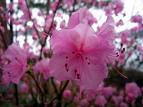
Rhododendron mucronulatum ‘Cornel Pink’: This deciduous Korean azalea bears its clear pink flowers on bare branches in March at least two weeks early than an other azalea. For best results plant in an area with morning sun and afternoon shade (or all dappled shade), in well-drained, acid soil. Avoid southern or western exposures that are warmed by the winter sun and encourage the formation of buds that will be damaged by severe night frost.
‘Cornell Pink’, introduced by Dr. Henry Skinner, is not an azalea. It is a small leafed rhododendron.
Thanks for commenting. I agree that the plant in question is a Rhododenron/rhododendron. Its Latin genus name is Rhododendron but people call it by the common names rhododendron and azalea (Google it both ways for examples). Unfortunately rhododenron can be used as either a botanic name (capitalized) or a common name (uncapitalized) to refer to some of the Rhododendrons. This is a good example of why people should use botanic names and I wrote a post on this last week.